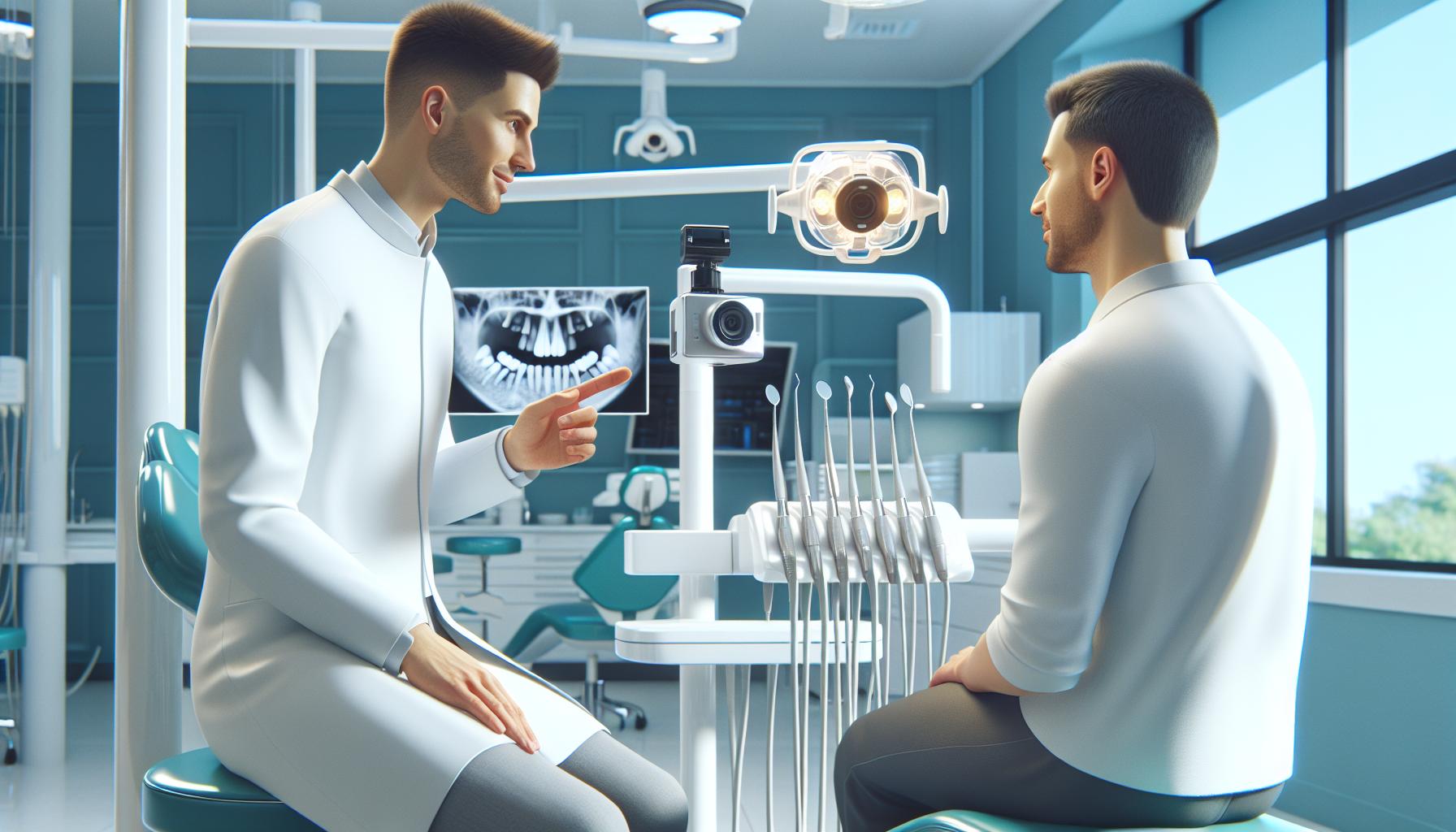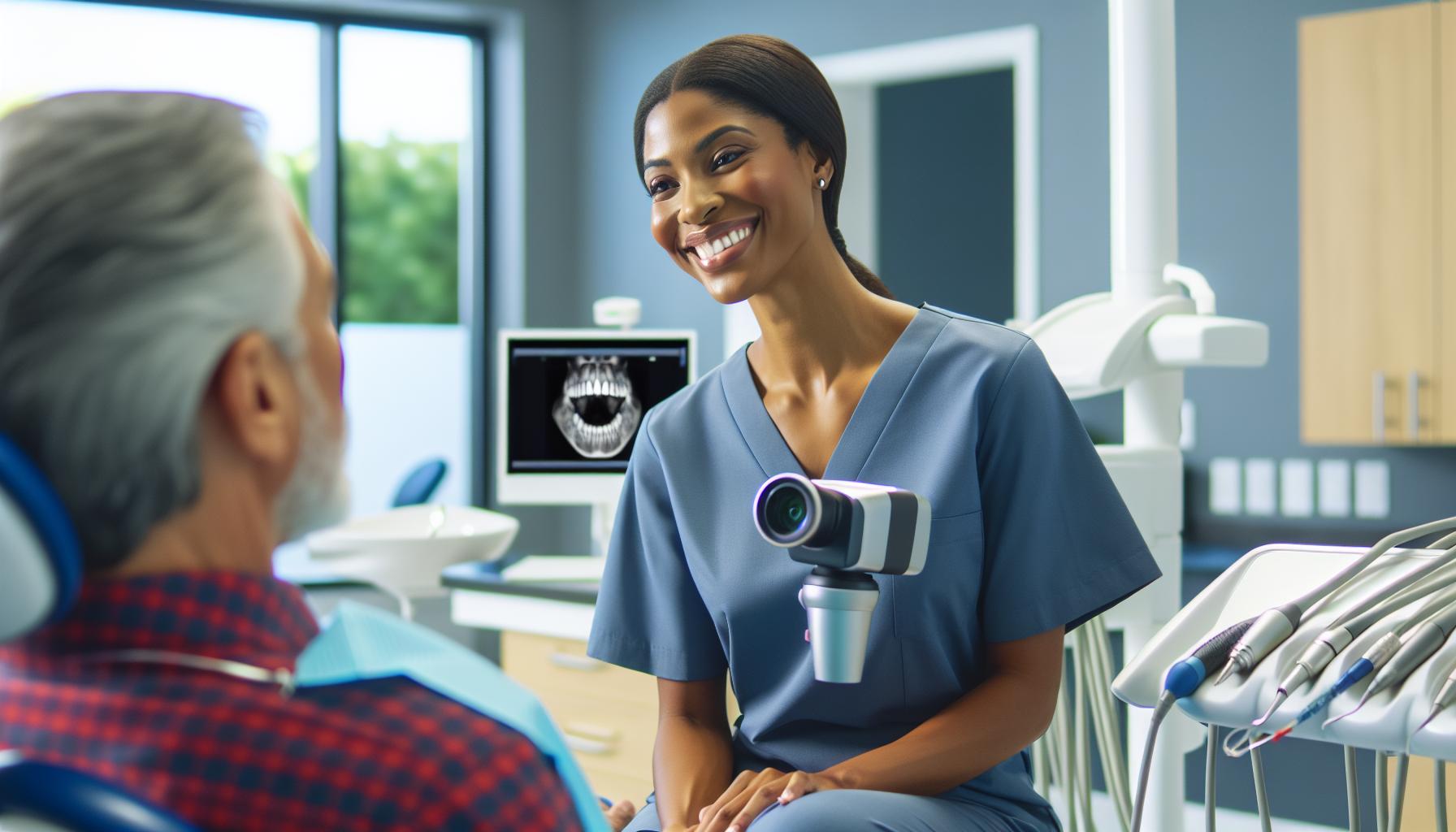In today’s fast-paced dental world, staying ahead of the curve is essential for any practice. A dental intraoral camera not only enhances patient communication but also improves diagnostic accuracy and treatment planning. This article explores the numerous benefits of integrating this technology into modern dental practices and why it’s a game changer for both dentists and their patients.
Importance of Dental Intraoral Cameras
Dental intraoral cameras play a vital role in modern dental practices. They improve patient experience, support accurate diagnosis, and facilitate effective treatment planning.
Enhancing Patient Communication
Intraoral cameras improve communication between dental professionals and patients. These cameras provide real-time images of the mouth, allowing patients to see conditions such as cavities, gum disease, or plaque buildup. Visual aids foster better understanding, as patients can directly observe the issues their dentist describes. This transparency builds trust and encourages patient engagement in their own care, leading to informed decisions regarding treatment options.
Improving Diagnostic Accuracy
Intraoral cameras improve diagnostic accuracy significantly. They capture high-resolution images that reveal intricate details of oral health that the naked eye might miss. Early detection of dental issues, such as tooth decay or cracks, becomes easier with precise visuals. Additionally, detailed images aid in creating thorough treatment plans, as they provide a complete picture of oral conditions. Dentists can utilize this technology to develop tailored care strategies, enhancing overall patient outcomes.
Benefits of Using Intraoral Cameras

Intraoral cameras provide several key advantages that improve the dental experience for both practitioners and patients.
Increased Treatment Acceptance
Intraoral cameras improve communication between dentists and patients. By displaying high-resolution images of oral conditions, dentists can clearly explain diagnoses and recommend treatment options. Visual aids increase patients’ understanding of their dental health, fostering trust. This transparency often leads to higher acceptance rates of proposed treatments, as patients can see the problems firsthand and are more likely to participate in their care.
Time Efficiency in Procedures
Intraoral cameras streamline various aspects of dental procedures. These cameras capture detailed images quickly, reducing the time required for diagnosis. Dentists can evaluate and discuss findings with patients while they remain comfortably in the chair. This efficiency not only saves appointment time but also allows practitioners to allocate resources effectively. As a result, dental practices can manage a higher volume of patients while maintaining quality care.
Key Features to Consider
Intraoral cameras come with specific features that improve their effectiveness in dental practices.
Image Quality and Resolution
High-quality images are essential for accurate diagnosis and effective treatment planning. Intraoral cameras should offer high-resolution imaging, ideally 10 megapixels or higher, to capture intricate details of dental conditions. Enhanced image quality aids in detecting cavities, fractures, and lesions more accurately. Many cameras sport features like LED lighting and optical zoom, which help illuminate and magnify the view, ensuring that dentists and patients see even the smallest issues clearly.
Ease of Use and Portability
Ease of use is crucial for integrating intraoral cameras into regular practice. A user-friendly interface allows dental professionals to operate the camera without extensive training. Look for cameras with lightweight designs and ergonomic handles for comfortable use during procedures. Portability matters, too; wireless options simplify movement between operatories and improve workflow efficiency. Quick setup and wireless functionality enable dentists to capture images rapidly, reducing chair time for patients and improving overall practice productivity.
Best Practices for Implementation
Implementing dental intraoral cameras effectively enhances their benefits. Attention to training and integration with existing technologies plays a significant role in successful adoption.
Staff Training and Usage
Training staff on the proper use of intraoral cameras is crucial for maximizing their potential. Educators should emphasize how to handle the device, capture quality images, and interpret the results. Regular training sessions ensure all staff members remain proficient with updates and new features. Involving staff in the training process promotes engagement and fosters a positive attitude toward technology adoption. Conducting simulated patient scenarios enhances confidence in using the camera during actual appointments.
Integrating with Existing Technology
Integrating intraoral cameras with existing dental software systems supports efficient workflows. Practices should assess compatibility with current imaging and patient management software. Seamless data sharing between the camera and practice management programs minimizes manual entry and reduces the risk of errors. Utilizing wireless options simplifies connectivity and improves mobility within the office. Prioritizing regular updates ensures the technology remains current and functional. The integration enhances both diagnostic capabilities and operational efficiency, benefitting the entire practice.
Conclusion
Adopting dental intraoral cameras is essential for modern dental practices aiming to improve patient care and streamline operations. This technology not only improves diagnostic accuracy but also fosters stronger communication between dentists and patients. By providing clear visual evidence of oral health conditions, these cameras build trust and encourage patient engagement in their treatment plans.
Additionally, the efficiency gained through quick image capture allows for better time management in appointments without sacrificing quality. As dental practices continue to evolve, integrating intraoral cameras will undoubtedly position them for success in delivering exceptional care and ensuring patient satisfaction. Embracing this innovation is a step towards a brighter future in dentistry.
Frequently Asked Questions
What are dental intraoral cameras?
Dental intraoral cameras are small, handheld devices that capture high-resolution images of the inside of a patient’s mouth. They help dentists diagnose and communicate treatments more effectively by providing real-time visual information.
How do intraoral cameras improve patient communication?
Intraoral cameras enhance patient communication by allowing dentists to show detailed images of dental issues. This visual aid helps patients understand their conditions and treatment options, which leads to increased acceptance of proposed treatments.
What are the advantages of using intraoral cameras in dental practices?
Intraoral cameras improve diagnostic accuracy, enhance patient experience, and increase treatment acceptance. They provide clear visuals of oral health conditions, facilitating early detection and tailored treatment plans while saving time during appointments.
What features should I look for in intraoral cameras?
When choosing intraoral cameras, look for high image quality (at least 10 megapixels), ease of use, and good portability. Additional features like LED lighting and optical zoom can enhance visibility and diagnosis efficiency.
How can dental practices effectively integrate intraoral cameras?
To effectively integrate intraoral cameras, practices should provide staff training and ensure compatibility with existing software. Regular training sessions will keep staff proficient, improving workflow and enhancing diagnostic capabilities.
